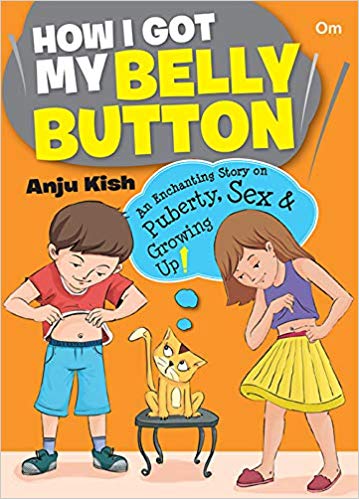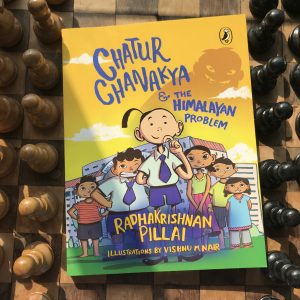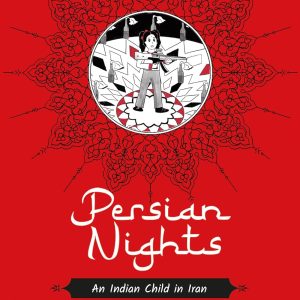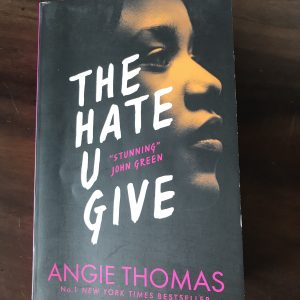Today, more than ever before there is a need for the right kind of sex education for children. With all kinds of information available at the click of a mouse, parents need to ensure that kids have access to correct, age-appropriate facts.
Every parent wants to educate their child about sex but they often fail because they do not know how to present facts in an age appropriate manner. When it comes to sex education for children, parents (understandably!) get goose bumps and may need help on broaching the topic. How I Got My Belly Button by Anju Kish fills this lacuna and is a great tool in the hands of parents! It not only gives the right information in the right manner but also increases bonding and trust between parents and children…a very pleasant side-effect of open communication!
Bookedforlife chats with writer Anju Kish, who wrote this book out of the personal need to educate her own children in the right manner. She also runs an organization called Untaboo which does commendable work on sex education for children. Excerpts…

I am interested in knowing how exactly you planned the flow of the story. It very cleverly incorporates concepts, hygiene tips and values all neatly packed in story format!
I was clear from the beginning that my sex education book for children will cover all facts but will also be lighthearted and fun to read. I started writing the book with just that one thought in mind. I opted for a fictional non-fiction format – all the information is presented through an adventure this family goes on which ensures that kids get hooked. Who says that you can’t have fun while learning serious stuff? So, my book follows that format of fun and lightheartedness.
The characters of my book -basically the parents and twins Neal & Kiara reflected me and my kids, the kind of relationship my husband and I share with our kids, the little everyday pranks, fun, conversations and warmth. So, the characters were not too difficult to create. There were however certain additional titbits of information I wanted the kids to know, but it wasn’t fitting in the narrative. From that predicament, the Cat character was born! The cat “Pepper’ is a total smart alec and says the wittiest of things or offers great titbits of information.
Sometimes, a chapter would have a lot of information and I felt, the kids may not be able to retain all that information. I was looking at a way to summarize each chapter for them. So, I hit upon the idea of having the young boy’s character write a diary every day. Hence, Neal keeps a diary of what he learnt and this diary entry of his at the end of each chapter acts as a refresher for the young readers.
I think, besides being a sex educator and having dealt with thousands of children, being a parent helped me write this book better, because I could cover all the topics I as a parent want my kids to know. And an Indian parent never loses an opportunity to slip in their value system into any conversation with their kids! So, automatically, this book has all of that! However, if all this is delivered in boring lecture format, kids will disconnect. I had to devise clever ways to incorporate them within the story.
What is the right age at which you would recommend parents read your book to children. It is never too early to start talking about our bodies, but at the same time there are some concepts best appreciated at the right age. So, what is the right age in today’s times of information overload?
The book is for ages 9-14. The language used is easy and very child friendly. I have always felt strongly about the fact if the child has asked a question, then you should answer that question, even if you feel the child is too young. What should change is just the language you use to give that answer. The book follows that format of simplicity of language which is required at this age to explain certain complicated concepts at time.
In these times of information overload, the kid’s curiosity is at its peak. Some kids will vent that curiosity through questions, but some might not openly voice it. But that curiosity might lead them online to get answers and that can prove disastrous. It is better that the kids get the information from a reliable and age appropriate source. The way the information is presented in the book, the initial few chapters can also be read to 7-8 year olds. However, if the parents feel that they want to wait a little bit before tackling the other topics with the kids, they can do so.
How do you suggest parents use this book? Read it at one go? Or, take time and go over it bit by bit across few weeks? Or let the child read independently and revert with questions?
The beauty of this book is that it can be read in one go or bit by bit across few days. While the latter may be more practical in terms of absorbing all the concepts discussed in the book, it may not be possible because the story is very engaging. For very young kids, you could probably read the initial few chapters and then wait for the next level of questions to prop up from them, before tackling those via the book.
The parent can read the book out to the child or a child can even pick it up himself and read independently as it is written in a very lucid language. The answers to most of the follow-up questions are in the story itself so I recommend that parents also read through to enable them to answer those questions.
It is also a book which parents of very young kids can read and equip themselves to answer their kids queries.
I think the illustrations substantially enhance the understanding of the concepts explained in the book. Could you tell us a bit more about that?
Most kids these days are visual learners which is why they prefer to read comics or watch videos. Hence, I was insistent that my book have illustrations the kids can connect with. I spent months identifying the right illustration style, creating the characters and then writing the brief of each picture and finding reference images for each illustration. There are more than 150 illustrations in the book and my illustrator Aneesh Date was super patient and did a fantastic job.
Are you planning any follow up books? While this book beautifully addresses sex education, I feel your approach will work very well for other key issues such as sexual abuse, STD’s, pornography, and so on, more specifically for teenagers and young adults. Are you thinking of anything on those lines?
I have concept notes written for five more books! Two are for pre-teens, one for teenagers, one for parents and one for young adults. I am excited and impatient to work on all together, but will have to pace them out. And yes, the book for teenagers will tackle pornography, masturbation, STD’s, sexual abuse, consent et al.
Your organisation, Untaboo, holds many awareness workshops for parents and children. Through your extensive experience with the same, what would you like to alert our readers to, about the current scenario of awareness/ experimentation amongst teenagers and children? Any other observation you want to make?
Kids today are very aware of things these days owing to the kind of media exposure they have to adult content. However, this awareness does not mean that they have accurate information. The statistics are quite scary – the average age at which a child in India watches porn is 11 and the average age at which a child in metros first sexually experiments is 14!
I’d like to appeal to the parents that if your kid asks you a question and you defer it, he or she will turn to the internet to satisfy his curiosity. The internet will not filter the information according to the level of your kid and will give your kids information which could be way beyond his years, along with unfiltered videos to watch. This can potentially scar your child for life.
To avoid this distress, make sure to give your child age appropriate sex education. It is no more enough to have just one chapter on reproduction in biology or have a period talk with the girls. Research worldwide has shown that a kid who is distracted by questions about his/her body and sex-sexuality is likely to underperform in school, experiment early on and watch more porn to satiate the curiosity. Sex education is a fantastic tool at parents’ disposal to combat this & they must act now.
And, please don’t say that the kids today are a net savvy generation and will learn on their own or they know it all! I have seen firsthand the kind of wrong information they have and the source of that information. Please have conversations and give them accurate sex education, even if you feel they are resisting having those conversations.
Is it important for parents to be equipped with teaching children about sex education even if they can rely on or organize inputs for the same vis a vis schools, teachers and professionals?
Most of us grew up with no formal sex education, so it’s absolutely okay to have inhibitions about broaching this topic with kids. A lot of parents today realize the importance of sex education and want to talk to their children, but don’t know when to begin, what to say and how much to say. So, it’s absolutely ok to reach out to experts or depend on the schools to take on the onus of this education. However, as parents, one should keep the doors of communication open and have discussions on these topics at home, so that the children know that they can turn to you and no topic is taboo at home.
How I Got My Belly Button by Anju Kish
Published by Om Books International
Age group: 9 years onwards




